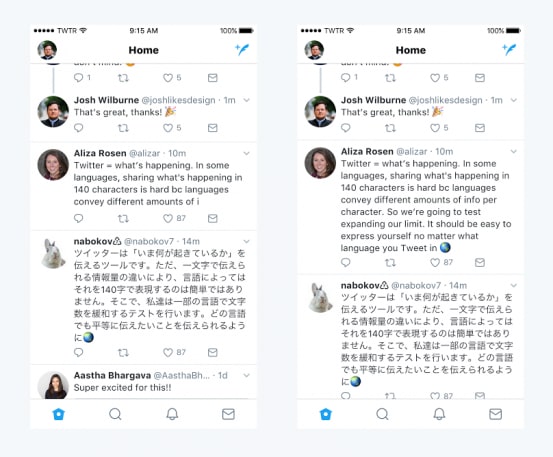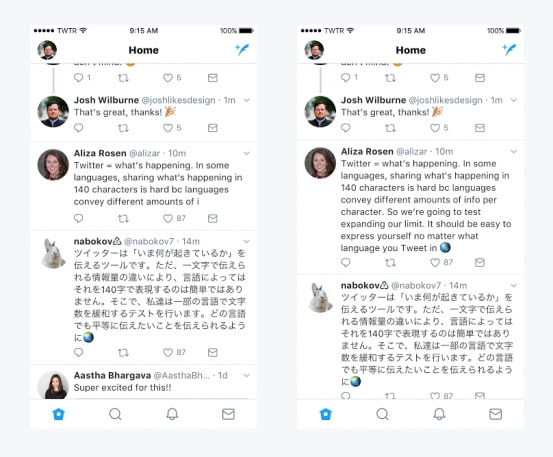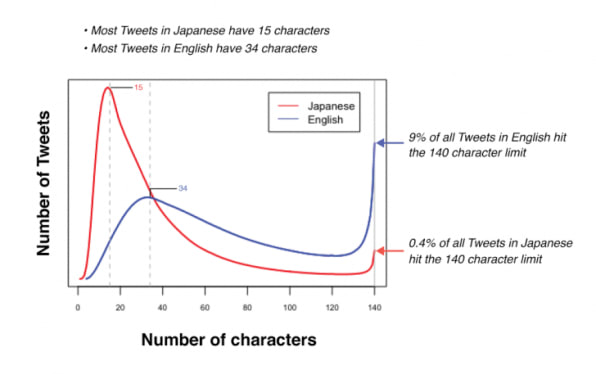
26 Sep Twitter Is Testing 280-Character Tweets: Too Much, Too Late?
More than 11 years into its history, Twitter is trying something new. In a test the service is announcing today, it will give “a small group” of people the ability to post tweets that can be up to 280 characters in length, twice the iconic 140-character limit.
Though I hadn’t seen any recent scuttlebutt that Twitter might be ready to make this move, the only surprising thing about this it is the timing. The notion that 140 characters are too restrictive is nearly as old as Twitter itself, and 280 characters have long been an obvious upgrade—one that social-media power user Robert Scoble said he’d be willing to pay $20 a month for way back in March 2007. Four years after that, Farhad Manjoo, then of Slate, argued for 280 characters at length, in an essay he said was inspired by a conversation he’d had with me on Bloggingheads. His proposal spawned a debate that seemed very serious at the time.
@extraface says Twitter should charge a nickel everytime you use an ellipsis. BUSINESS MODEL!!! I’d pay $20 a month to have 280 characters.
— Robert Scoble: VR/AR (@Scobleizer) March 13, 2007
Starting last year Twitter began allowing you to cram more information into a tweet by not counting elements such as @names, photos, and polls against the 140-character count—thereby keeping the 140-character limit but making it less limiting. But the last thing we heard about it simply going away was Twitter CEO Jack Dorsey saying it wasn’t happening.
So why 280 characters, and why now? Twitter’s blog post on the test dwells on the fact that Japanese, Chinese, and Korean are more space-efficient than other languages, allowing Twitter users to say more in less space. (In fact, they aren’t part of this new 280-character experiment.) It’s people who tweet in every other language in the world, the post says, who are frustrated by the 140-character wall and could use more elbow room. Giving them 280 characters rather than a heftier count–like, say, 10,000–preserves a degree of brevity.

Last time I checked, the ability of some languages to say more than others in a few characters hasn’t changed during the time that Twitter has existed. I suspect that a secondary explanation given by Twitter’s blog post is more meaningful: “When people don’t have to cram their thoughts into 140 characters and actually have some to spare, we see more people tweeting.” Especially given that Twitter has been under increasing pressure to find more users and get them to tweet more, particularly since going public in 2013.
In any event, if a more intrepid company was going to make this change, it might have made it years ago, rather than leaving it hanging out there as a possibility for so long. If the new Double Stuf tweets get rolled out to all Twitter users, they might feel less like a bang than a whimper.

The Upshot Of 280
I cheerfully admit to having a personal bias here. As a nine-year veteran Twitter user myself, I’ve never felt limited by the 140-character format, and would not vote to raise it. Or maybe it’s more accurate to say that I’ve found being required to grind down my thoughts to be a useful, even fun exercise, like writing a limerick. Then again, I write for a living; my take on such constraints may be different than those of rank-and-file Twitter users, who just want to say what they want to say, without obsessing over the number of characters involved.
I do have a number of questions about the impact of the change, assuming that it goes beyond its current test phase:
Will it inspire meaningful angst among the Twitter faithful? Historically, the people who love Twitter the most are also the least interested in seeing it change. Just last year, rumors that Twitter might start using an algorithm to fiddle with the order of tweets led to the #RIPTwitter meltdown. (Of course, Twitter did introduce such an algorithm and I didn’t see many after-the-fact complaints about it; the prospect of 280 characters could be similarly more scary than the reality.)
How much will it change the flavor of Twitter? Until Twitter unleashes the change to everybody, I’m not sure if we’ll know whether the average 280-character tweet wil be twice as thoughtful, informational, and/or entertaining as a 140-character one, or merely flabbier. The service’s skimmability, if that’s a word, is one of its greatest assets, and it’s directly tied to the mandatory conciseness of the format.
When will @Twitter do the right thing & go to 280 characters? #twitter
— Blackcatprowliii (@Blackcatprowl3) September 21, 2017
What will the impact be on tweetstorms? In theory, there would be no need for what is currently a two-tweet, 280-character mini-tweetstorm. Longer storms could involve half as many tweets as before. Or maybe the wordy people of Twitter will get even wordier.
Will it help cure any of Twitter’s ills? In theory, getting a little more space to express ourselves might lead to greater understanding and reduce the chance of flame wars breaking out. Then again, if trolls, harrassers, and bots get access to double-long tweets, they’ll just use them to be even more destructive.
Will my brain retrain itself to take advantage of the extra characters? Years of practice has given my subconscious the ability to express itself in precisely 140 characters without trying—a feat that used to be known as creating a twoosh. (Example: As a reply, I just tweeted “I’ve been watching a lot of 1960s live TV lately, and am occasionally amazed at the smoking. Johnny may have hid his, but his guests didn’t,” a thought I wouldn’t expand upon even if I could.) Even after Instagram removed the requirement that all images be square, I instinctively continued to stick with the format. And maybe something similar will happen on Twitter.
Twitter presumably has theories on some of these matters and is using the test to get a better understanding of all the implications. Despite never having wished for longer tweets, I’m willing to give them a try—and now that they seem like a near-done-deal, I hope that Twitter doesn’t dither too long before formalizing the switch for everybody.
Source: Fast Company




Sorry, the comment form is closed at this time.